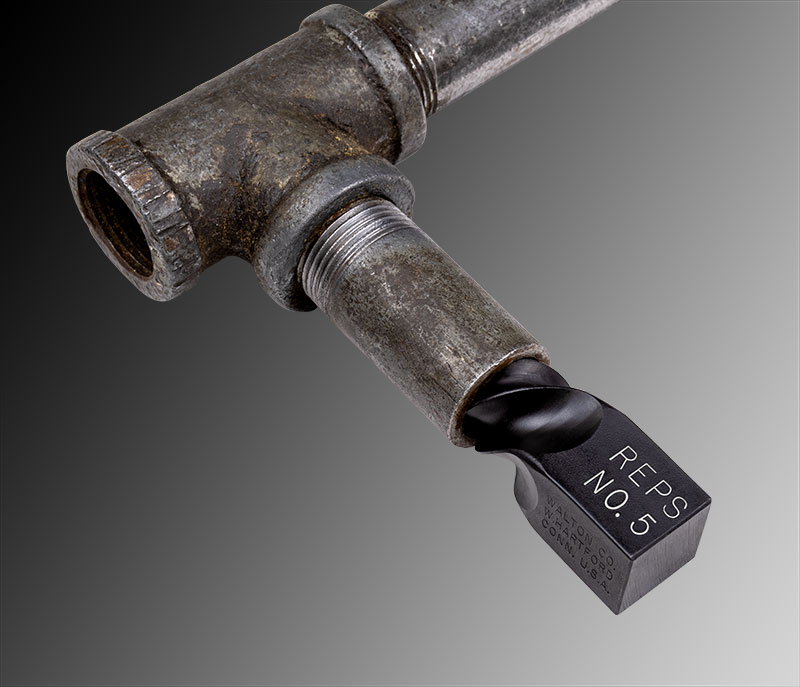Tips for Removing Broken Pipe, Studs or Screws
How to Extract a Broken Pipe
Insert the proper size REPS broken pipe extractor straight into the pipe, so that all four points “bite” at the same time.
Turn the extractor counter-clockwise with a wrench, and the pipe will unscrew on its own threads.

How to Extract Broken Studs or Screws
Drill a hole* in the exact center of the broken part deep enough for the REPS stud and screw extractor to achieve its shallow grip. Insert the proper size extractor straight into the drilled hole, so that all four points “bite” at the same time. Turn the extractor counter-clockwise with a wrench, and the stud or screw will unscrew on its own threads.
- It may be necessary to give the extractor a light tap with a hammer to help seat it in the part.
- If the part to be removed is rusted, use penetrating oil to loosen the rust.
- To remove the extractor from the broken piece, turn the extractor clockwise to unscrew and release the bite.
* See our Table of Sizes below for the recommended drill size for each extractor size.
REPS Table of Sizes
Warning: For maximum safety when using Walton tools, please wear protective eyewear and carefully read and follow the accompanying instructions on proper operation.